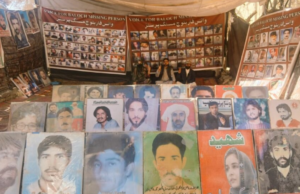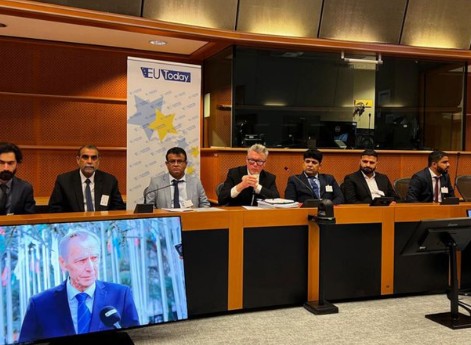
Three months after a hastily brokered ceasefire ended 12 days of confrontation between Iran and Israel, a false calm settles over the Middle East. But behind the facades, both armies are studying the unprecedented exchange of fire in June that would make any round two conflict apocalyptically worse than round one.
The fear is not academic. Iran demonstrated skills that astonished even combat-seasoned intelligence professionals, and Israel’s formerly celebrated air defence system demonstrated flaws that Tehran will certainly exploit in the next round. Meanwhile, Israeli strikes on Iranian nuclear facilities have fallen short of conclusively crippling Tehran’s nuclear program. June’s war was a teaser, not the main course. Both now have an appreciation of the other’s power that they did not have before. That information cuts both ways—it may deter or inspire.
The hypersonic challenge
The worst news for Israel was the Iranians’ launching of their Fattah-1 and Fattah-2 hypersonic missiles, which performed much better than anticipated. In the war’s most fiercely contested 24 hours, Israel’s intercept rate of these missiles declined from its normal 90 per cent to as low as 65 per cent. The mathematics are sobering. Iran fired over 400 missiles during the 12-day conflict, with more than 40 causing damage or casualties despite Israel’s layered defense system. In a prolonged engagement, those numbers could multiply exponentially.
“The hypersonic threat remakes the math entirely,” said Dr Tal Kalisky, a missile defence expert from Israel. Even as he highlighted that Israel had successfully shot down more than 95 per cent of ordinary missiles, he acknowledged the unprecedented challenge posed by missiles descending from beyond the atmosphere at speeds a decade faster than the speed of sound, splitting their warheads in flight.
Only Arrow 3 and David’s Sling are capable of mid-air adjustment to pursue such threats, and both are dependent upon interceptor reserves that dipped perilously low during June’s action. An early-July Israeli Defence Ministry evaluation reported a general success rate of 86 per cent against ballistic missiles in the conflict. But here lies the key question: What if Iran fires not 400 missiles over 12 days, but 400 missiles in 24 hours?
The nuclear question mark
While the White House proclaimed Iranian nuclear sites “obliterated” in a late June announcement, independent analysts paint a more nuanced picture that should trouble both camps.
David Albright’s Institute for Science and International Security, analyzing satellite images taken on 14 June, reported surface damage to Iran’s Fordow enrichment plant but identified the difficulty in assessing internal damage to deeply buried complexes. CNN’s analysis, using Albright verbatim, suggested “a considerable amount of damage might have been inflicted on the enrichment hall and adjacent halls that service enrichment.”
But “substantial damage” is not the same as destruction. More concerning, recent satellite photos examined by The Wall Street Journal show Iran has moved to expand construction at the Fordow buried plant, “with active work” featuring excavators and personnel positioned at entrance shafts to the plant.
The leadership vulnerability factor
Israel’s June campaign introduced a dangerous new variable that will make any future war that much more unstable: deliberate targeting of Iranian leadership. The campaign, which assassinated senior military, political, and at least nine nuclear scientists, has not gone unnoticed by Tehran’s ruling elite.
Iran’s President Masoud Pezeshkian publicly admitted to being on Israel’s hit list, yet secretly assured advisors that any attempt on top leaders’ lives would be met with a region-shaking military response. Iran’s leadership succession crisis only increases the stakes. Supreme Leader Ayatollah Ali Khamenei, 85, has signaled three possible successors but has not directly appointed any. Israeli intelligence officials believe that such a power vacuum would either radicalise or moderate Tehran’s response, depending on the individuals who ultimately come to power. Decapitation tactics cut both ways. Israel showed that it can reach deep into Iran’s command hierarchy. However, that capability may actually accelerate rather than decelerate conflict if Tehran’s leadership concludes that it needs to act before it becomes a target itself.
Lessons learned, strategies revised
Israel demonstrated its ability to strike deep within Iranian borders, hitting nuclear facilities that Tehran believed were secure. The strategic arithmetic is also made more complex by what didn’t happen in June. Hezbollah in Lebanon and other Iranian-backed militias in Syria and Iraq mainly waited out of the immediate fighting, choosing to save their strength rather than open up several fronts against Israel. Round two could be multi-front. Iran learned that trying it alone wasn’t a successful move. Israel knew that its deterrents could be overwhelmed. Both indications lead to an even worse scenario the next time around.
The Russian and Chinese roles
Russia and China won’t intervene directly in a renewed Israel-Iran war but will both defend Tehran and introduce a dangerous element of complexity. Russia, particularly, owes a debt to Iran for providing drones that have been crucially effective in Ukraine. That debt is now being repaid with the provision of intelligence, ammunition, and electronic warfare gear, which could be used to counteract some of the disadvantages Iran experienced in June. The Russians won’t send in troops, but will outfit Tehran appropriately. With what Iran has done for Russia in Ukraine, they see such help as a strategic investment.
China’s interest is less noisy but arguably more important. Beijing aims to prevent a wider Middle East conflict that could threaten to destabilize oil supplies and complicate its broader great power rivalry with Washington. Even in the face of rivalry, China will strive to prevent Iran from disintegrating under Western pressure. China views Tehran as a valuable counterweight to American influence in the region.
Counting down to what?
The two key questions on policymakers’ minds in Washington, Jerusalem, and Tehran are what will ignite the next installment and when to launch a pre-emptive attack before it’s too late?
June’s clash flared out of a multi-layered chain of escalations of proxy attacks, assassinations, and miscalculation.
Killing Iran’s top leaders, military commanders, or chief scientists can get out of hand and cascade into war across the region.
Time may not be on the side of peace. Iran’s nuclear program, battered though it is, continues to advance. Each month takes Tehran further toward a line that Israel has vowed never to allow it to cross. And each month, more and better missiles for Iran, and more sophisticated methods to deliver them.
We are not in a stable equilibrium. We are counting down. The only question is whether we’re counting down to a negotiated settlement or to a war so destructive that June will be remembered as a border war.
Meanwhile, the ghost ceasefire persists, but the hiatus is coming to an end. But in Tel Aviv’s and Tehran’s war rooms, planners are feverishly working on the sequel that everyone suspects will prove far worse than the original. Whether the preparation itself becomes a self-fulfilling prophecy is perhaps the most chilling question in the Middle East these days.







